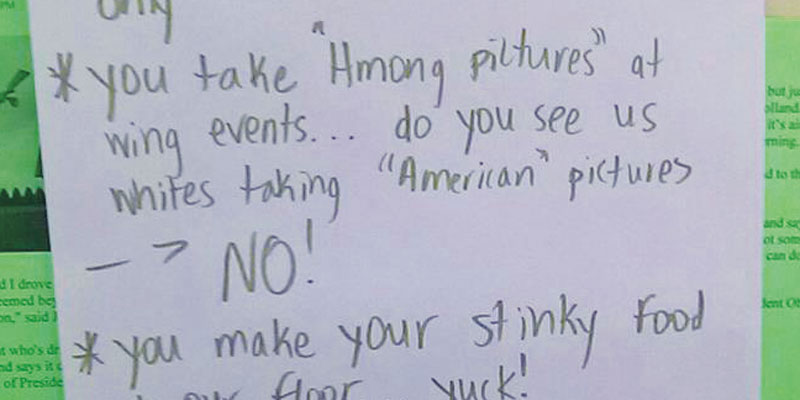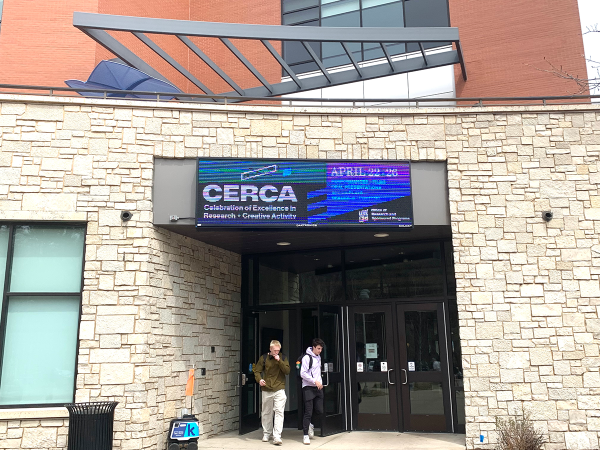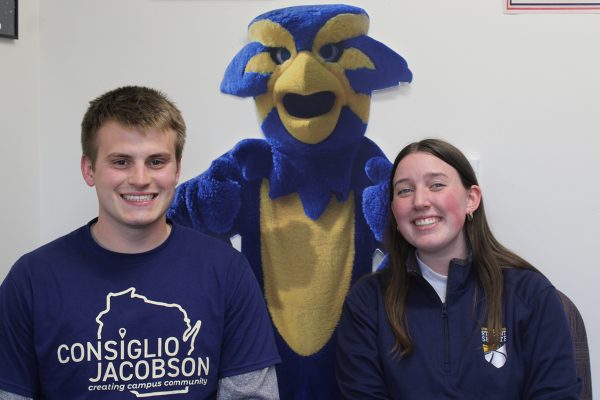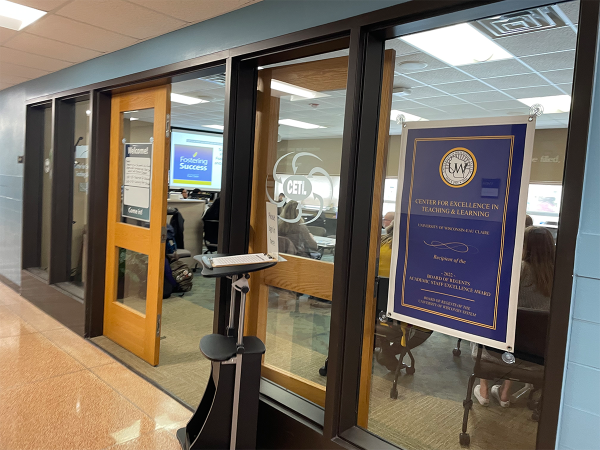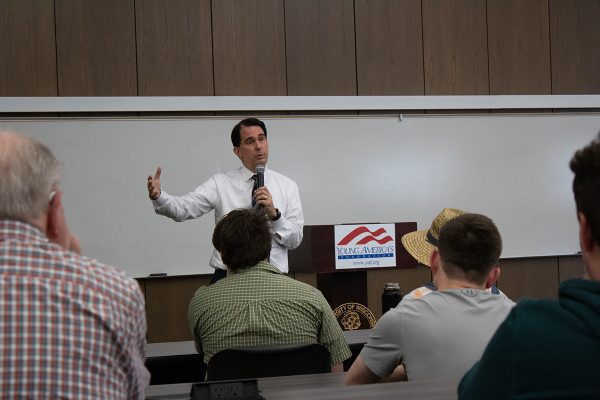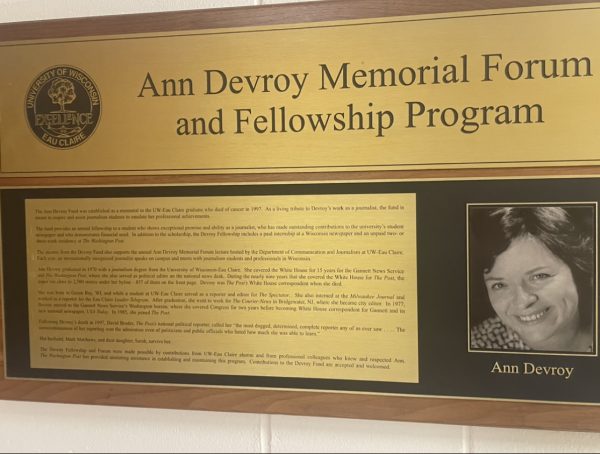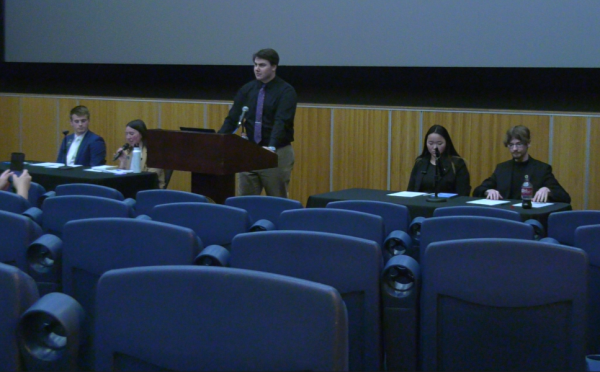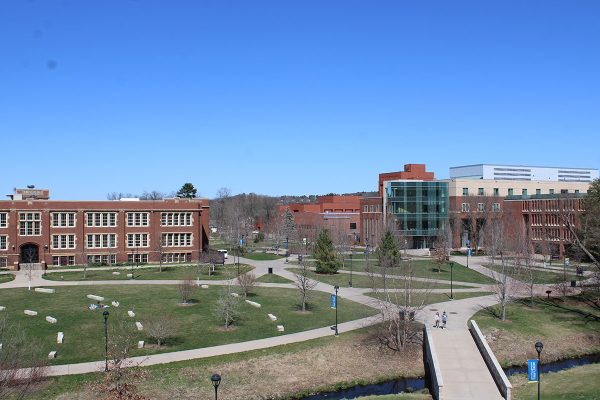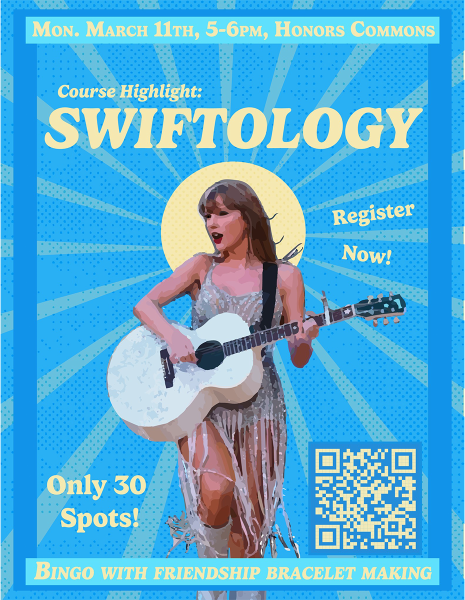Insensitive signs posted in Towers Hall
December 6, 2012
On Nov. 20, four signs which contained culturally insensitive and racist remarks were discovered in the women’s bathroom on the 8th floor of Towers Hall North, where the Hmong Culture Living Learning Community is located.
The sign on the main door to the women’s bathroom read:
“Problems with this floor: You have meetings for Hmong only. You take “Hmong pictures” at wing events… do you see us whites taking “American” pictures. No! You make your stinky food on our floor… Yuck! You are ridiculously loud and NEVER get yelled @, we get yelled at before quiet hours. Oh, and you don’t even try to talk to us. K, thanks.”
Three more signs were found in the bathroom stalls, and contained a collection of comments that people would respond to with their own notes, according to Vice Chancellor of Student Affairs Beth Hellwig.
A woman who lives on the floor discovered the signs. She asked to remain anonymous for this article.
She sent the photo to her RA, Mai Neng Vang, and told the RA of the men’s wing, Xeeyee Kha. Kha told the woman to take down everything with hateful words.
“I thought it was immature,” the woman said. “I understand people come from different backgrounds — we all do. But we’re all old enough now where we should know how to respect each other’s differences.”
Hellwig, who is also the chair of the Bias Incident Response Team, said no one has taken responsibility for the things written on the signs.
“It makes it really hard for the students living on the floor, they don’t know who’s writing these horrific comments,” Hellwig said. “It creates a feeling of vulnerability.”
At a Q&A on Monday, Chancellor Gilles Bousquet spoke about inclusivity, diversity and respect of other cultures.
“We think that it is, in the end, a teachable moment,” he said. “This is a moment where we have to seize the opportunity to push a little harder on students throughout the campus community to understand how important it is to understand diversity of cultures.”
When the signs were discovered, Hall Director of Towers North Chris Pahl decided that a wing meeting would be held once everybody was back from Thanksgiving break on Nov. 26.
The Spectator sent several emails and made phone calls to the housing department, though all were met with declines to comment and referrals to Assistant Chancellor for Facilities Mike Rindo. Rindo was unavailable for comment.
Both Hellwig and the woman who discovered these signs said they did not think the meeting went well. The woman said that about three students spoke, all of them Hmong.
She said part of the problem is that the Hmong students felt they couldn’t be fully honest when those in the Housing Department who spoke at the meeting were all white.
“It’s like all they can say is ‘We’re sorry’ and then they shrug it off,” she said. “They make it seem like this is the first time this has ever happened, and it’s not.
“It was like they were trying to make the white people feel more comfortable about it, but why does it always have to be about them?,” she said. “They make it seem as if white people were targeted, but we were the ones targeted.”
Junior Jarrel Montgomery is a part of the BIRT. He said the team has been looking into what can be done at a curriculum standpoint to educate Eau Claire students further.
“I knew from the moment I got on this campus as a freshman there were just lots of micro-aggressions and lots of hate language directed toward the Hmong students,” Montgomery said. “You would hear it, but it would be in passing. When this event erupted in that restroom, I wasn’t surprised.”
He said that while it wasn’t surprising, he was definitely bothered by the way in which it was presented.
“I think whoever wrote that letter tried to cover up some deeper hatred by using some very surface things,” he said. “I think that stinky food reference wasn’t literal. I think it was a metaphor that was trying to cover up ‘Your presence here is not wanted.”
The woman who discovered the signs said the fact that she feels she cannot make noodles or rice without complaints does create tension for her and other Hmong students on the floor.
“It feels like they want us to change for them, but we have had to change enough to fit in in a white community, in the U.S.,” she said. “When our parents came here, they had to learn English. Do you still see us wearing Hmong clothes to go to school? No. And they still want us to change more? They ask us to stop eating what we want to eat? No.”
Montgomery said that the Housing Department is currently reevaluating RA training and working on how to include training for issues of cultural sensitivity so RAs can properly handle situations like this.
At a BIRT meeting on Monday, the idea of expanding Safe Space to include issues of race was discussed, Montgomery said. However, they would want to make sure it was done without diluting what Safe Space was originally intended to do — to make LGBT students feel more comfortable on campus.
Inclusivity, Equity and Diversity Fellows on campus are currently looking into ways to include issues of race and culture as a mandatory part of the curriculum.
Montgomery said it is not a perfect world, and instances like this do happen, whether we think they should or not.
“I think you need to realize that these underlying prejudices and biases will never go away,” he said. “So realizing that this is a problem is the first step to combating this issue.”
Editor in Chief Eric Christenson contributed reporting to this article.

